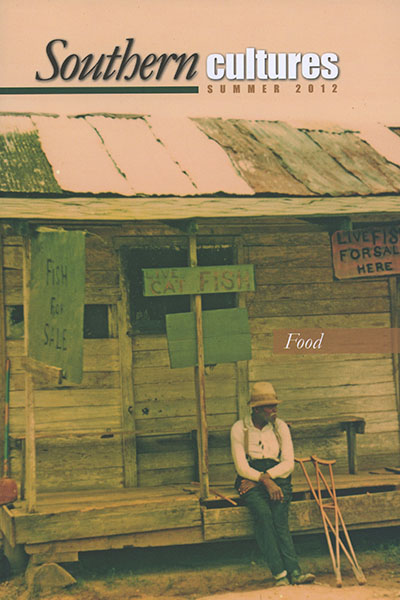“Although the same cottontails flourished across the region, Chatham County turned its rabbits into something like a regional brand, recognized throughout the South and along the eastern seaboard. By the end of the nineteenth century, Siler City had become the de facto rabbit capital of the Southeast.”
The Eastern cottontail rabbit thrived in the edges that ran all across the North Carolina Piedmont in the late nineteenth century. Perennial rabbit dynasties filled the fields, meadows, and hedgerows over the spring and summer mating cycles. In September of 1896, they ran in such numbers that reports came of trains hitting them by the score. On November 1 of that year, Chatham County, the “happy hunting ground for Mr. Rabbit,” opened what promised to be a banner season. The morning of December 2, snow began falling in the region, and continued throughout the day. Nine inches fell on the county seat of Pittsboro and brought out the children for snowballs and sledding in town. Out in the countryside, the snow forced the rabbits into the open. Tireless boys chased them in the fields and caught them without dogs, guns, or traps.1
Some of the rabbits graced the dinner table fried or in a stew, but local produce dealers bought most. That week, resellers in Siler City bought more than 1,700 from hunters, and in Harper’s Crossroads, about 800. The Chatham railway depot known as Richmond reported shipping 2,400. On the morning of December 9, 7,250 pounds of rabbits, hunted, trapped, dressed, and packed in Chatham, departed the town of Moncure on a northbound express train. Within the day, wagons loaded with them saturated the state capital, Raleigh, where diners were always open about their love for Chatham rabbit.2
Although the same cottontails flourished across the region, in the years between 1880 and 1920, Chatham County turned its rabbits into something like a regional brand, recognized throughout the South and along the eastern seaboard. By the end of the nineteenth century, the railroad district of the county’s newest and biggest town, Siler City, had become the de facto rabbit capital of the Southeast. Jokes linking politics and Chatham rabbit entered the repertoire of statewide humor, as did the idealized rusticity of the county’s people. This account draws mostly on newspaper sources to trace the stages in the career of a foodway: its birth in the old fields, the early development that separated it from peers in neighboring counties, its introduction to society (polite and otherwise) in the state capital, its weird turn to politics, its prime-of-life endeavors in industry, and its demise on the shifting ground of modernity.
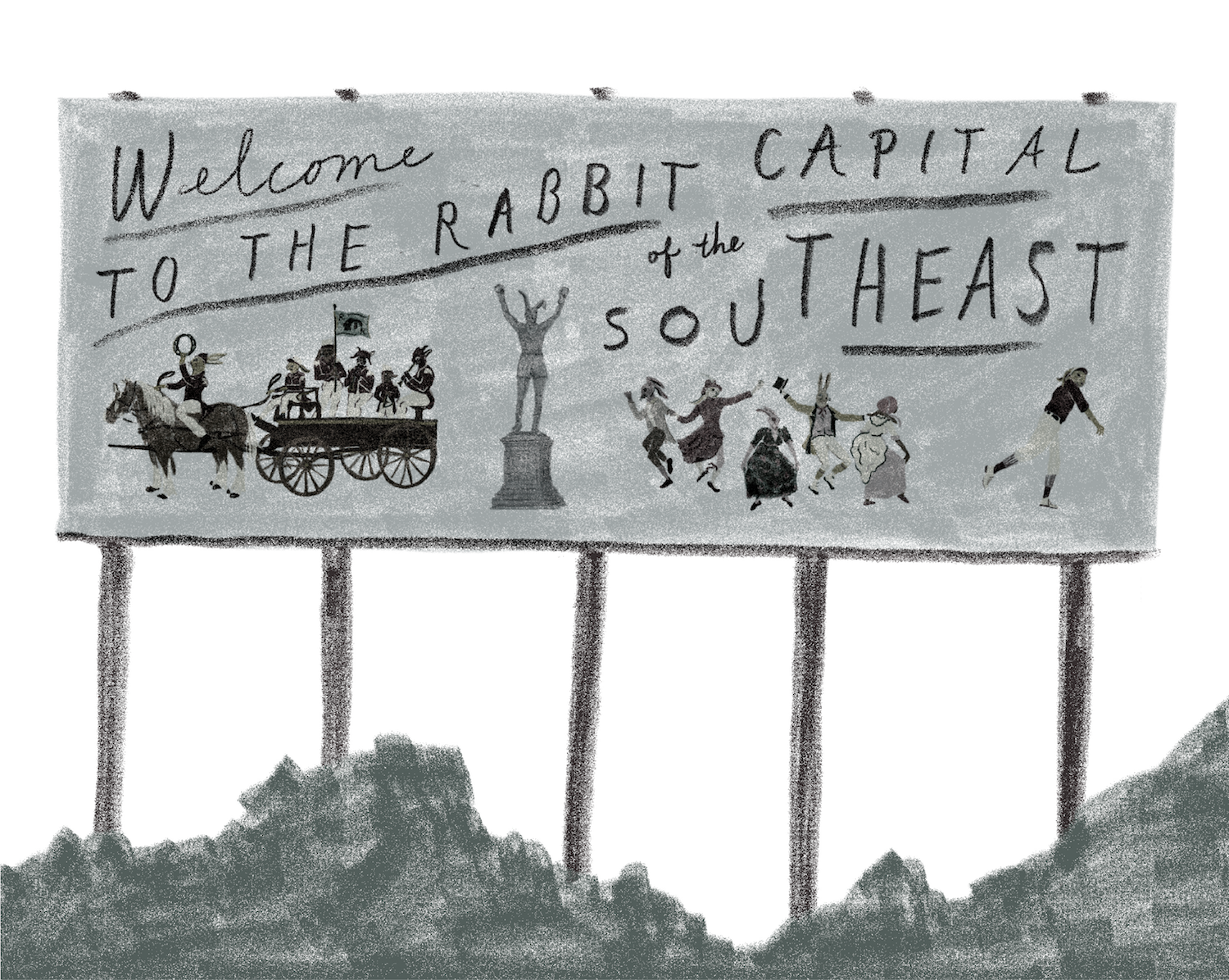
If a market begins with supply, a game market by necessity begins with a wildlife habitat. A century after the rabbit’s heyday in the Piedmont, the North Carolina Wildlife Resources Commission (NCWRC) advised farmers who sought to restore the teeming populations of the past. The NCWRC characterized the rabbit’s prime habitat with three aspects: 1) a low predator population; 2) “extensive areas of uniformly good escape cover,” including “large abandoned farm fields with a uniform cover of weeds or young saplings”; 3) “isolated areas of dense cover that have not been exploited by predators,” which can include “dense brambles, briars, heavy weeds or brush.” The description suits the Piedmont of 1880, which then spanned some twenty-four (now twenty-seven) counties in the central uplands of the state. Dense hardwood forests and century-old farms, both active and fallow, crisscrossed the region. Farmers had spent upwards of a hundred years controlling predators, and the countryside remained remote, even from the urban centers it enveloped.4
Chatham anchored the Piedmont’s southeast corner. From its early history, the county distinguished itself mainly in its isolation. Though situated in the center of the state, it lay on the edge of the growing urban areas now known as the Triangle (Raleigh, Durham, Chapel Hill) and the Triad (Greensboro, High Point, Winston-Salem). While the surrounding counties boasted universities, mercantile and manufacturing centers, and the state capital, no major institutions settled in Chatham. Three rivers, prone to flooding, each too shallow and rocky to float cargo, snaked through the hills and converged in the southeast. Two important roads passed through the county north-south and east-west, crossing in Pittsboro, but the secondary roads were notorious for their muddy impassibility.
One of the largest counties in the state in terms of area, Chatham produced little in the way of manufactures. Based on nineteenth-century U.S. Census data on agricultural products for both the state and the Piedmont, Chatham measured out middling in yield per acre. But it was high in total farm acreage, and the data on land usage provides at least one substantial clue to explain the exploding rabbit populations of the time.
The 1880 U.S. Census surveyed agricultural land use, organized according to “improved” and “unimproved” land. Improved land included the subcategories of tilled acreage and permanent meadows, while woodlands and “other unimproved land” made up the unimproved category. Chatham’s total farm acreage in 1880 included more than 70 percent unimproved farmland. About half of the 429,000 acres of farms consisted of woodland, which placed it nineteenth in the state and third in the Piedmont. But more interesting is the subcategory of “other unimproved,” described in the census report as “including ‘old fields’ not growing wood.”5
Recall that the NCWRC cited “abandoned farm fields” as one element in a habitat for rabbits. A fifth of 1880 Chatham’s farmland, some 90,000 acres, fell into the “other unimproved” category, putting the county second in both the state and the Piedmont. The only county with more, Guilford, lay just to Chatham’s north and west, and most often earned notice as a competitor to Chatham’s yield of rabbits.6
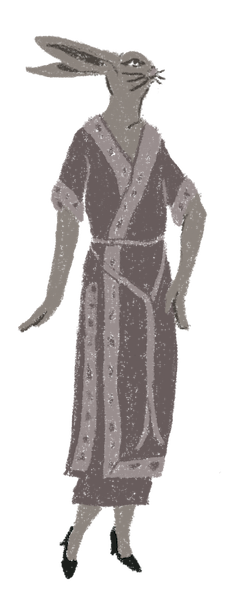

Both of these counties, and Chatham in particular, offered a traditional narrative of exodus to help explain acres of abandoned fields. The farms in west Chatham and Guilford dated from the mid-eighteenth century, when families from the mid-Atlantic migrated south. By the early nineteenth century, these farmers felt the pull of fresh topsoil out West, when it grew cheaper to find new land than to replenish what the planters called “oldfield.”7
That story resonated well enough in Chatham that it informed the startup strategy of the county’s longest-lived newspaper. Henry Armand London took the first issue in his forty-year run as publisher of the Chatham Record—September 19, 1878—and mailed it out to known members of the Chatham diaspora, inviting them to subscribe. “More persons have removed from Chatham probably than any county in the State,” he wrote, “and . . . are scattered all over the United States, especially in Indiana and Texas.” The next January, he published a letter from Talladega, Alabama, whose author left Chatham forty-five years previous but retained an impression of his former county’s abandoned fields; he advised farmers there to take up sheep farming, since “there is a large amount of land thrown out, in Chatham, the strength of which is by no means exhausted.”8
Over the years, letters appeared in the Chatham Record, and later the Siler City Grit, from Chathamites who had left and taken up agriculture in westerly locales. One series starting in 1887 came from a man who had left for Indiana in 1869 at the age of twenty-one. Here again, Chatham and Guilford connect along the “Quaker Belt” that spanned both counties. Many members of the abolitionist community left around 1830 to found a new Pittsboro in the “free state” of Indiana; over time, like the Record ‘s correspondent, others left to join them. When they abandoned their fields and moved west, these early, restless settlers laid the seeds of the great four-decade rabbit harvest.9
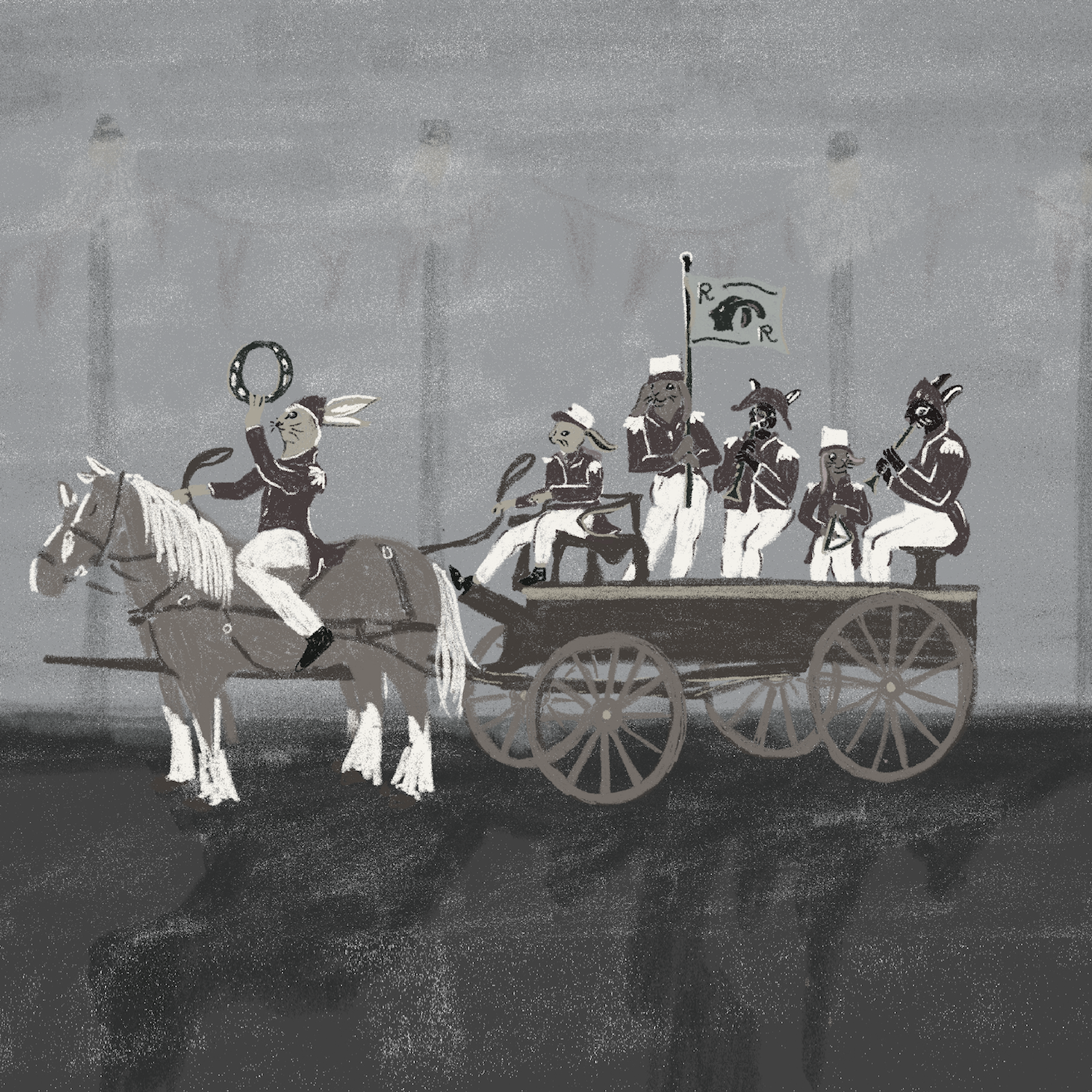
So Guilford had its old fields and its rabbits, but Chatham’s became famous. Among the myriad factors that might explain the disparity, this essay offers three. One is geographic, one economic, and the third, romantic. Geography goes straight to the demand-side of the market dynamic. Agricultural trade in Chatham in the early 1880s bent eastward, to the state’s political class in neighboring Wake County. By 1880, wagons laden with produce flowed to Raleigh every autumn along an old stagecoach route that connected the county seat to the state capital. The sorties became so frequent that in December the Raleigh Visitor asked, “what would the Raleigh market do without Chatham county?” Henry London, then in his third year at the Chatham Record, watched the wagons pass through Pittsboro. He responded to the Visitor in an editorial dated December 16, 1880:
This county supplies the Raleigh market with all sorts of things—from a bale of cotton to a rabbit skin. Our wagons carry to Raleigh quantities of cotton, flour, oats, pork, chickens, partridges, etc., while droves of cattle are driven there every week. Whenever a wagon is seen in Raleigh you would generally be safe in guessing it came from Chatham.
That proximity to a ready market gave the renown of Chatham rabbit time to develop in the early part of the decade. Later, when the railroad came, the produce dealer—the classic middleman—had a base of established demand on which to scale up distribution.
The hunting traditions of Chatham and its western neighbors developed from similar landscapes and histories, but there was an interesting difference that translated to an economic impact on the market. The western counties were more accessible from the major rail lines through Greensboro, and a number of wealthy northern sportsmen built extensive estates there. J. P. Morgan’s lodge lay in Randolph County, W. Gould Brokaw established the grand estate of Fairview in Guilford, and there were others. Northerners visited the game lands of Chatham, but they did not put down residential roots.11
The northern sportsmen preferred quail to other prey, but there is at least anecdotal evidence that their visits to their estates had an impact on the local exchange. On November 20, 1912, a report from Greensboro, in Guilford, cited seventy-five non-resident licenses issued to date. The visitors caused the price of rabbits to rise to 25 cents; one farm boy got a quarter each for a haul of 17. Even when Chatham’s supply infiltrated, the price stayed high. Such a “rabbit bubble” would have disrupted the market in Chatham, especially in those later years, when produce dealers along the rail lines paid out a stable price between 8 and 15 cents per rabbit.12
A more romantic explanation for the primacy of the Chatham market supposes that the ritual of chasing rabbits in the snow simply ran in the boys’ blood. William “Buck” Edwards, a farmer and Confederate veteran, corresponded with the county’s newspapers for decades and in 1911 described the rabbit market in the antebellum period:
It is now the first day of March and one of the most beautiful snows falling I have ever seen, being warm and no wind. What a contrast to the winters of the long ago when the snow would stay on the ground from four to eight weeks while the rivers and creeks were frozen over from bank to bank for many weeks. When these big snows came it was fun for us boys to cacth [sic] rabbits, though there was no sale for them, and very few eaten except by the higher-up-class who looked on them as a luxury; but the boys caught them for the hides which were 10 cents per dozen—the market never going up or down, no cornering, no trust, no tariff, just an open market without competition, no small crop, no over production, but always plenty and more coming. There is nothing that will add to their destruction like a big snow, as they are easily caught.13
Chatham boys also carried the experience of the rabbit chase to war. One witness to the county’s Confederate veterans’ reunion of 1898 described two-hundred old soldiers—Buck Edwards among them—forming a column and marching to a church. As they went, they cut loose with the whoop they had used in battle, which was not, as the observer wrote, a battle call. It was born of the free outdoor lives that they had led as boys. Confederate soldiers had learned the rebel yell “as every Southern boy now learns it—rabbit hunting without imagining there is anything of the ‘rebel’ about it.”14
By the 1880s, the boys were trapping the rabbits in such volume that the road to Raleigh might well have been called Rabbit Road. In the October 1882 Raleigh News, letter-writer “John Gubbins” registered the following complaint:
The season is approaching when hares and ‘possums will be plentiful, and when large quantities of this species of game will come pouring into Raleigh by the Chatham wagons. Now, I have a splendid ‘possum dog, and brother Jim, he has a good dog for rabbits, and his boys are cute, too, in setting rabbit gums. But it is a well-known fact that Wake county rabbits and ‘possums are much shyer and harder to catch than Chatham rabbits and ‘possums, and, besides, they are scarcer here than they are in Chatham.
Gubbins lobbied the Wake county commissioners “to levy a tariff on Chatham rabbits and ‘possums to enable our dogs and Jim’s boys’ rabbit gums to compete with these foreign rabbits and ‘possums.” The 10 cents on rabbits and 25 on possums would have doubled the going rates for these “delicacies.” Political wit about the Chatham rabbit always showed impressive range; the Washington Post reprinted the piece three days later as “Protection in Raleigh.” Sure enough, London observed wagons rolling through Pittsboro within the month. In December, Chatham fed the Methodist Conference, the Grand Lodge of Masons, the North Carolina Supreme Court, and the Federal Court, all of which convened in Raleigh that month.16
Chatham Rabbits Chose Us
A Chat with the North Carolina Duo
The statewide renown of the Chatham rabbit, and then its northward reach, became possible in the late 1880s, when the railroad changed the entire calculus of the rabbit market. Twenty miles west of Pittsboro, the old stage road crossed another old road that went from Greensboro to Fayetteville. In 1884, the Cape Fear & Yadkin Valley Railroad laid its line between Sanford and Greensboro, and the train stopped at this crossroads. The town of Siler City incorporated in 1887. It boomed from the start, and as the trains flowed out the career of the Chatham rabbit took a strange turn to politics.
As sure as Election Day and the open of hunting season fell in the same week each year, Chatham rabbit became a fixture in North Carolina’s political humor. For decades, the rodent served as an ironic foil for the overstuffed politician. That the people of Raleigh loved Chatham rabbits as much as they did only made the joke all the more pointed. The gag simmered for a long while in the state’s papers. The Fayetteville Observer in 1885 remarked on its “Raleigh friends” recent “waxing merry over the rabbit question for some months.” The Charlotte Observer in November of 1894 complained that Chatham rabbits had “ruined the stomachs of the people of Raleigh.” Five years later, the Charlotte paper linked the over-of rabbits in the capital to “the bad politics which obtain there.”18
But the joke was served up fully-cooked on December 21, 1903: “I have just returned from Raleigh,” a “traveling man” told the Charlotte Observer, “and I want to tell you that those people down there are in a bad fix. They are suffering terribly from an over-consumption of Chatham county rabbits.” The witness described rabbits arriving by the train-load and sold “so cheap that people got into the rabbit-eatin’ habit before they knew what they were about.” He complained that “[t]he influx of the Chatham county rabbit is the worst epidemic of the year,” and Raleigh “the most melancholy place I ever saw.” The ears of the State Auditor were “growing longer and slenderer by the day.”19
The joke ranged far, even reaching Alabama by the start of the New Year. A piece in the Birmingham Ledger, picked up by the Washington Post, warned the state’s rabbit-eaters of Raleigh’s predicament. With “beef at 15 to 20 cents and hog meat 8 to 12, folks just naturally took to 10-cent rabbit” and ate so much they began to manifest the tell-tale “rabbit lope.” A rabbit-step polka had caught on in the ballrooms.20
The seasonal joke peaked with a lengthy report by Observer correspondent H. E. C. “Red Buck” Bryant. Red Buck spun the yarn of the “lope” and “mellow eyes” around encounters with a cast of politicos. The worst he saw was Clarence Poe, editor of Progressive Farmer and a Chatham boy born and bred. On a visit to Poe’s office, he found the editor “sitting, motionless, among a large pile of papers, looking out with dull and sweet, yet mellow and tender, eyes.”21
The season closed with a bit of doggerel in the Charlotte Observer, March 13:
From governor down to clerk, It affects them all so funny;With freakish feet, loping up the street, Like a Chatham county bunny.
The Chatham rabbits laugh. (‘Tis revenge the epicures say)At the curious capers of pedantic lawshapers, And their funny, awkward way.22
Henry London had edited the Chatham Record for twenty-five years by the time the rabbit joke made its rounds in 1903-1904. He showed only passing interest and regularly held up the county’s more dignified meats, like beef or pork. Still, after the joke’s lengthy run in 1903-1904, London’s ear seemed to pick up more rabbit humor. As a loyal and highly partisan Democrat, he took special pleasure when jokes came at the expense of his political nemesis, the Republican Party. So after the Democratic machine steamrolled the state in the 1906 elections, he gleefully ran a piece from the Industrial News, a Republican paper published in Greensboro, explaining why Chatham had gone for the Democrats:
In the first place Chatham county has a statewide reputation for the number, size and juiciness of its rabbiits [sic]. Nothing that falls a victim to the hunter’s gun throughout the entire confines of North Carolina can compare with the Chatham rabbit.
In the second place, election day was an ideal rabbit-hunting day, and being a general holiday the temptation to go rabbit hunting for a few hours before voting must have been too strong for a number of the Chatham voters. We further conclude that the plentifulness of rabbits and the ideal character of the day must have proved too much for the men who had intended to bring home their bag in time to vote, with the result that the would-be voters upon returning found the polls closed.23
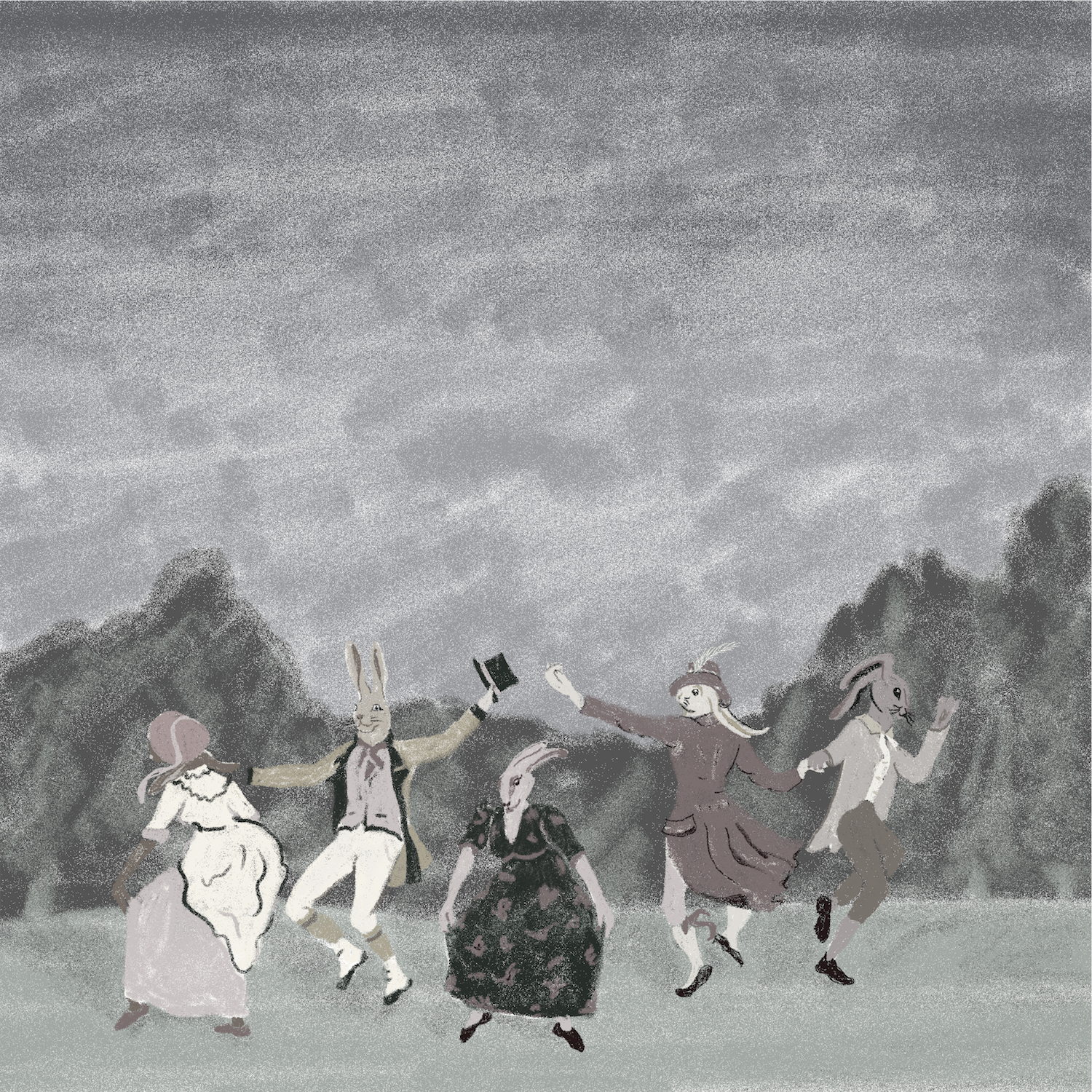
About the time the rabbit entered North Carolina’s lexicon of political humor, a generational shift was shaping up in the London family. Henry’s son, Isaac, finished his studies at the University of North Carolina just as the joke peaked in the editorial columns in 1903–1904. Having spent his childhood in his father’s newspaper office, Isaac bought the Grit, the Siler City newspaper, in May 1909 and set up an office opposite the train depot. When the season for small game opened on November 1, he deposed cotton and anointed rabbit king. He rang in his first rabbit season as editor with purple prose: “The good old county of Chatham is now on the verge of coming into her own again.” Having waited many months, “her citizens will arise in their might, gird their loins and with the erst-while despised cur, fare forth for fame.” Despite the rabbit jokes in the state’s papers—”slanderous statements”—there were “seriously” a lot of rabbits in Chatham, “way up in the thousands.” After a favorable summer, 1909–1910 promised to be a good season for rabbits.25
The younger London owned and edited the Grit for eight full rabbit seasons and part of another. He declared from the outset that the paper would remain non-partisan in politics. Beginning in 1911, he heralded rabbit season by placing a profile drawing of a rabbit at the top of his editorial column. It was an ironic reflection of the rooster drawing with which partisan Democratic papers, including his father’s, gloated over election victories during those same November weeks.26
Meanwhile, Isaac London continued the Grit‘s tradition of publishing tallies from the produce dealers who bought rabbits from hunters and shipped them out by rail. The day after the 1909–1910 season closed, he fixed the countywide total at about 25,000, “not taking into consideration the home consumption.” London also provided figures for shipments from Siler City in earlier years: 35,000 each in 1905 and 1906, and 25,000 in 1907. A late-summer freshet had reduced the population in 1908, but it rebounded in the season just concluded, to 19,166. A few weeks previous, London had boasted that “experience shows that no matter how many are killed, the following season finds them just as plentiful.” “With the price of meat soaring,” he wrote, “we might wish the rabbit season prolonged indefinitely.”27
Isaac opened the 1911–1912 season by exhorting, “Chathamites who have drifted afar, heed ye the call of the wild and return for the music of the hound is even now echoing in the distance.” He mused that “the hills and rich bottoms of good old Chatham are again ripe.” The next week, Grit correspondent “Sleepy Sam” reported that “there is a touch of frost in the air, which reminds that [persimmons] and rabbits are now ripe. Yesterday, the undersigned had barbecued rabbit.”28
The yield was high that season. By the second week of January, Siler City had shipped over 21,000 rabbits, on pace for the most prolific season in years. Then two massive blasts of winter weather hit the state a week apart. The extreme weather slowed down the rabbit harvest; and as London complained after the first wave, “No, it was not a good rabbit snow.” After the second, he moaned, “Hit the first man who speaks of the snow as ‘a beautiful canopy of white.’ Choke him.”29
Doggerel took over the pages of the Grit those weeks. In the January 10 issue, a poem appeared by J. E. Smith, a student at Wake Forest College, headlined “‘The Chatham Rabbit’ in Poetry”:
Huckleberries and harvest cherries
And a bounteous crop of wheat,
The never-failing blackberries
That makes the pie so sweet;
Though they stain the ladies hand,
Yet there’s plenty in the land.
Some are cooked with new-ground wheat
For us and all our hands;
Some by rosy lasses sweet,
For winter’s use are canned.
September brings the pumpkin pie,
‘Tis mighty hard to beat;
And Uncle Ned’s o’possum, why
Is baked so good and sweet.
Of Chatham’s greatest blessings,
All these will not compare
To one baked ham of the Chatham Rabbit,
Or dumplings, stew and dressings
Cooked with the Chatham hare.30
A week later, a correspondent called “VIA” sent a poem inspired by the snow, which included the lines:
Let it snow and blow, let it hail and sleet
Just so I have plenty of bread and meat;
Plenty of firewood and a roaring fire
In cold weather is my heart’s chief desire.
. . . . . . . . . . . . .
Let the turkeys gobble, let the rabbits go,
I won’t trudge after them in this slippery snow;
With pencil in hand close to the fire I’ll sit
And write items for THE SILER CITY GRIT.31
VIA’s verse earned notice from the Charlotte Observer and “high praise for its unaffectedness and its truth,” while Chatham was held up for its rustic charms. If the county “were one of the ancient Mediterranean nations, it would erect a statue of a gigantic rabbit with ears forty feet long.” Despite the interruption by weather, the season ended with big numbers for Siler City: 26,060 rabbits and 15,003 partridges. Dealers bought rabbits at an average price of 8 cents and birds at 10. All told, the game market brought an estimated $6,000 (roughly $137,000 in 2011) into Siler City alone.32
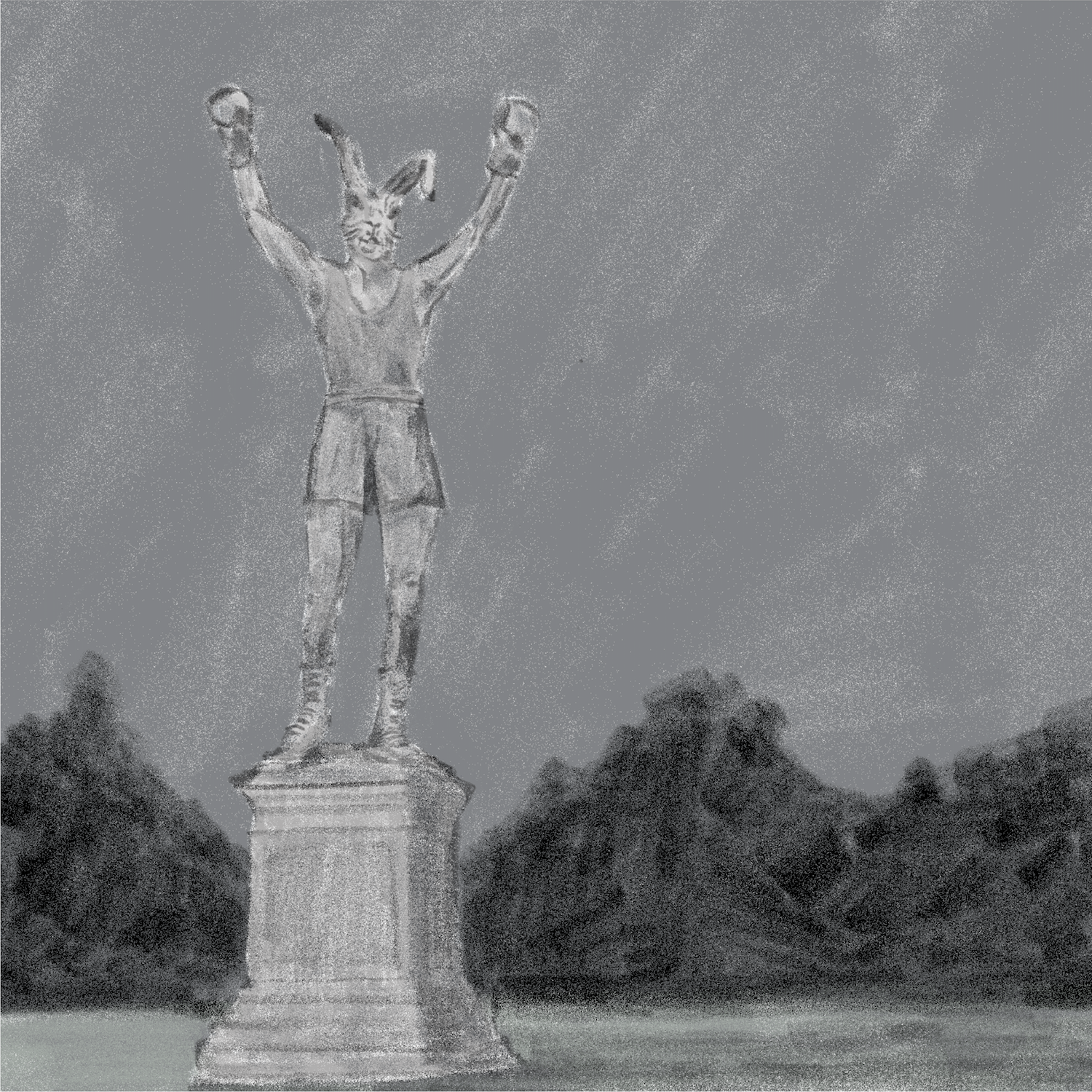
Perhaps the pinnacle document of rabbit-era Chatham flowed from the pen of a county man who met the misfortune of traveling during rabbit season. Albert Phillips was a widower and shoe repairman who lived for many years in the west Chatham town of Bennett. Under the pen name “Long Shanks,” he corresponded with the county’s papers for decades and left behind some of the most refined essays on Chatham life.
Phillips’s itinerant work cycle moved him between Bennett and Sanford, in Lee County to the south of Chatham, sometimes by way of his daughter’s home in Durham. When he set up his shoe-repair shop in Sanford in the autumn of 1913, he had already been away from home for some time. Homesick and weary, Long Shanks wrote the Grit:
I am here at Sanford in the electric shoe shop not feeling well by any means; guess it is caused by the change from the good Bennett mineral water to Durham and Sanford pipe water, and I long for the time to come that I may sit by the good old Chatham fires, drinking the ever-healing waters, and feasting on cotton-tail rabbit.
Yes, when I glanced over the columns of The Grit last week and saw at the head of the editorial column Chatham’s prized photograph, I at once knew that the rabbit crop was ripe, and I could almost see those bright-faced boys returning from their traps with the captured prizes. So I hastened down to the City market to see if I could find a Chatham rabbit for my breakfast, and behold, when I got there they were just turning on the electric lights and I could only find one old long, poor Lee county rabbit hanging by the head and hind feet down, and I asked the price and the clerk said 25 cents, and so I looked at it again and it reminded me of an old maid I saw in Durham with a tube skirt on. So I did not have rabbit for breakfast.34
Phillips returned to spend a few days in Bennett a week later and reported on a dinner cooked by his daughter-in-law:
I surely enjoyed the good Chatham rabbit dinner prepared for me Sunday by Mrs. E. S. Phillips. I do not know how many she had cooked but I counted 11 legs; but as as [sic] Miss Ava Teague and Miss Mary Deaton were present I became flustered and quit counting though they did find 31/2 shank bones by my plate.
He concluded: “The Chatham rabbits with a few Randolph [County] tube skirt cottontails are on the market here in large numbers, and I hate to now leave them to return to Sanford.”35
The fame of the Chatham rabbit peaked in the second decade of the century. In April of 1914, the Raleigh Times reported that “one of the best known men of this city” had seen “Chatham Rabbit” on the bill of fare at one of New York City’s best known restaurants. He learned that customers “liked them better than any other sort having become tired of eating Belgian hares.” Soon after, the same man found Chatham rabbit at a restaurant in Baltimore, then at “a famous Norfolk cafe,” where it was considered “the rabbit among rabbits when it came to really good eating.”37
The Chatham rabbit also maintained its place in the pantheon of political humor, always its wee stature set against things prodigious and serious. A few weeks into 1910, the Charlotte Observer and the Wadesboro Ansonian jointly complained “that the Guilford county and Chatham county producers of wild rabbit show a censurable disposition to bull the market at consumers’ expense.” Where the Ansonian threatened to call on the federal government to intervene, the Observer favored “giving the State anti-trust law first chance.”38
Just days later, the Charlotte Observer ran an editorial, “The Chatham Rabbit No Joke,” which took the economics more seriously, addressing “the vexed question concerning the high and ever-increasing price of fresh meats.” The plenitude of rabbits in Chatham might challenge “the meat packers of the West” into “securing control of the rabbit market,” as they had for beef, mutton, and pork. The piece even suggested that “as part of the national conservation movement Uncle Sam should purchase and lay off a great rabbit preserve in Chatham county.” A week later in Alabama, the Montgomery Advertiser reprinted much of the Observer editorial as “A Boom for the Rabbit.” The Advertiser exhorted, “Let the meat trusts be brought low by the adoption of a rabbit diet, is the proper thing to do. Bring on your rabbit!”39

As late as Halloween in 1917, Isaac London advised that some “progressive Siler City citizen, with a keen business acumen and a surplus of cash, would do well to open up a rabbit canning factory.” It would be “a splendid war measure, in the conservation of food.” But the statement would be one of his last promoting the native product of his home county. Two weeks later, he bought two newspapers in Rockingham, with plans to combine them into one, the Post-Dispatch. He and his family immediately moved to Rockingham.40
Winter came, another cold one. In early January of 1918, Henry London reported the “coldest spell since February, 1899, and the coldest December weather we have ever had.” Within a few weeks, he would contract pneumonia and die. That month, H. E. C. Bryant, who had reported on the Chatham rabbit’s takeover of Raleigh in 1904, wrote to the Charlotte Observer from Washington, D.C. He said Chatham would rejoice when it learned that an official in the Department of Agriculture “recommended as a war service a more general utilization of rabbits’ for food.” Bryant reported rabbits selling for 50 cents in Washington, when twenty-five years previous they “were killed by the thousand for their skins which sold for two or three cents a piece.” Toward the end of the year, rabbits were selling in Washington for a dollar each, though many had been “condemned by health authorities on account of spoilage through improper packing for shipment.”41
Following Isaac London’s departure from the Siler City Grit, the documentary trail falls off considerably. Boys still chased rabbits, to be sure. The December 30, 1921, issue of the Chatham Record noted an incident where a “rabbit left his nest near the Confederate monument at midday on Tuesday and was caught by a crowd of boys before he gained a block.” But reporting on the market in Siler City no longer appeared with any frequency.42
That previous spring, “The Chatham Rabbit,” a play by the student and budding journalist/writer LeGette Blythe was produced at the University of North Carolina Playmakers Repertory Theater. Its titular character was a star football player from Chatham County who ran fast and amazed his brothers at the “I Tappa Keg” fraternity with his ability to attract visiting women students, despite his plain, rustic reserve and debilitating shyness. In the 1920s, sportswriters in the state would on occasion refer to a baseball pitcher’s lack of control by saying he was “wild as a Chatham rabbit.”43
Several oral histories from the mill town of Bynum in the 1970s highlighted the sense of Chatham’s past as the “rabbit county.” John Wesley Snipes, born in 1901, recalled rabbit hunting as a boy, killing “thirty or forty rabbits a day.” They would hang the dressed rabbits in the smokehouse in cold weather and use them for “rabbit hash.” Frank Durham, born in 1905, played in a string band called the Chatham Rabbits that made appearances on the radio station WPTF in Raleigh. Tellingly, each man had a different explanation for the demise of the rabbit market. Snipes said, “But the foxes got so they destroyed them, and we don’t have that many rabbits now, very few.” Durham said, “They was everywhere, but there come a disease in here and killed them out, and there never have been none.”44
By the time these men shared their reminiscences, the great rabbit market of Chatham County had retreated into legend. The sweep of world war, government regulation, and economic forces, as well as broad changes in agricultural practice, transportation modes, and demographics, surely all contributed to its decline and demise. The rabbit harvest was a phenomenon of that time between Reconstruction and the encroachment of the modern age, and for a brief four decades it all but defined the place. Then it disappeared into the hedgerows.
Rabbit Recipes from the Archives
A jugged hare
CUT it into little pieces, lard them here and there with little slips of bacon, season them with a very little pepper and salt, put them into an earthen jugg, with a blade or two of mace, an onion stuck with cloves, and a bundle of sweet-herbs; cover the jugg or jar you do it in so close that nothing can get in, then set it in a pot of boiling water, keep the water boiling, and three hours will do it; then turn it out into the dish, and take out the onion and sweet-herbs, and sent it to the table hot. If you don’t like it larded, leave it out.3
Cacciatore
Bacon fat, 2 tablespoons.
Flour, 1/2 cup.
Water, 1 cup.
Onion, 1 medium size.
Tomato juice, 1 cup.
Butter, 1 tablespoon.
Rabbits, 2.
Salt and pepper, to taste.
Cook the onion to a golden brown in the butter, add tomato juice, salt and pepper. Dredge the rabbit with flour and brown in the bacon fat, as soon as the meat is a rich brown, add the tomato sauce and cook very slowly until tender, on the back of the stove or a fireless cooker.10
In gravy, and stewed, with dumplings
I am glad the election is over and I am going on getting gladder for the rabbit season is now on with all the joy that comes to boy[s] that trap them together with all the great happiness it will give to thousands of children who sop their bread in rabbit gravy[.] Chatham is said to be the banner county for rabbits . . . .
I gave an old colored woman a rabbit yesterday and it was the best deed I have done since the election. I said, “how are you to cook it?” “oh,” she said, “I will stew it an put dumplings in, too.”17
Barbecued
[W]ait till the first killing frost comes next fall, when the rabbits are fat, and then have one that has been caught in an old-fashioned gum log, prepared by the following recipe: Par boil until thoroughly done, then suspend by a strong cord attached to the mantel, before an old-fashioned hickory wood fire in an old-fashioned open fireplace. Prepare a dressing of butter, vinegar, salt and pepper, . . . take a sharp-pronged fork and stooping down, punch holes in the rabbit, turning him round and round. Then pour the dressing over the rabbit, as he turns, having a basin underneath to catch what doesn’t soak in. Continue this treatment until the meat is thoroughly saturated, and has been browned, slightly, by the fire. While this is going, let there be also a turn-over corn pone in course of construction, and a pot of strong coffee in “process.” When everything is ready, draw your chair up to the table, set close before a cheerful wood fire on a chilly evening, when you are feeling well and hearty, and “layto.”24
Broiled
Rabbit is the principal diet of Chatham’s connoisseurs and epicures. No rabbits are shipped from Pittsboro because the fastidious people of that county seat get their beauty and many other good qualities from a diet of rabbits. The best cooks have ninety-seven different ways of cooking the rabbit, and the animal is so good in each way that when Pittsboro folks go away from home they carry enough rabbits to give them at least one a day while they are gone. They have been known also to carry a broiler and to be found by their hosts broiling a rabbit in their room after they thought everybody else had retired.33
This essay first appeared in our 2012 Food issue (vol. 18, no. 2), guest edited by Marcie Cohen Ferris.
Will Sexton once managed the kitchen at Crook’s Corner restaurant in Chapel Hill and holds Master’s degrees in English-Creative Writing from Hollins University and Information and Library Science from the University of North Carolina.NOTES
- “An Abundant Game Year,” Charlotte Observer, September 26, 1896 (hereafter CO); “What’s in Your Stocking,” CO, December 25, 1896; “Local Records,” Charlotte Record, December 3, 1896 (hereafter CR); “The Snow,” CR, December 10, 1896.
- “Siler City Siftings,” CR, December 10, 1896; “From Harper’s X Roads,” CR, December 17, 1896; “Richmond Ramblings,” CR, December 17, 1896; “Facts About the Railroads,” CO, December 9, 1896; “None Genuine Otherwise,” CO, December 12, 1896.
- Hannah Glasse, The Art of Cookery, Made Plain and Easy (London: Printed for W. Strahan, J. and F. Rivington, J. Hinton, Hawes and Co., W. Johnston, T. Longman, W. Owen, S. Crowder, B. White, T. Caslon, J. Wilkie, G. Robinson, T. Davies, J. Robson, T. Cadell, T. Becket and Co., W. Davis, J. Knox, W. Nicoll, W. Cornish, T. Lowndes, R. Dymott, H. Gardner, B. Domville, J. Richardson, T. Durham, R. Baldwin, and J. Bell, 1774), http://books.google.com/books/about/The_art_of_cookery_made_plain_and_easy.html?id=xJdAAAAAIAAJ.
- North Carolina Wildlife Resources Commission, North Carolina Rabbits: Natural History and Management (1994), 9.
- U.S. Census Office, Report on the Productions of Agriculture (Washington, D.C.: Government Printing Office, 1880), xiii; Historical Census Browser, 2004, University of Virginia Geospatial and Statistical Data Center, http://fisher.lib.virginia.edu/collections/stats/histcensus/index.html, accessed November 2, 2009.
- Ibid.
- Wade Hampton Hadley, Doris Goerch Horton, and Neil Craig Strowd, Chatham County, 1771-1971 (Lillington, NC: Edwards Brothers, Inc., 1976), 5-6; Steven Stoll, Larding the Lean Earth (New York: Hill and Wang, 2002), 20.
- “To Former Chathamites,” CR, September 19, 1878; “For the Record,” CR, January 9, 1879.
- David McMath, “Chathamites in Indiana,” October 13, 1887; Interstate Publishing Company, History of Hendricks County, Indiana (Chicago: Interstate Pub. Co., 1885), http://books.google.com/books?id=qUbWAAAAMAAJ.
- “Helps for Homemakers,” CO, February 17, 1915.
- Mike Marsh, “New Biography Uncovers Famous Author’s Life,” Star News ONLINE, February 25, 2008, http://www.starnewsonline.com/article/20080225/NEWS/802250343; “Mr. Brokaw at Fairview,” CO, November 22, 1910; “H. Mortimer Brooks Shot; Wounds Serious,” New York Times, December 10, 1904.
- “Guilford Rabbits,” CO, November 20, 1912.
- William W. Edwards, “Buck’s Letter,” Siler City Grit (hereafter SCG), March 8, 1911.
- G. W. Paschal, “Reunion of Confederates,” Raleigh News and Observer (hereafter RNO), August 7, 1898.
- George Ellison, “The next gum down the line,” Smoky Mountain News, August 25, 2004, http://www.smokymountainnews.com/issues/08_04/08_25_04/mtn_voices.html; “Siler City Siftings,” CR, January 14, 1897.
- “Another View of the Tariff Question,” RNO, October 15, 1882; “The Chatham Trade,” CR, December 07, 1882.
- William W. Edwards, “Buck’s Letter,” SCG, November 23, 1911.
- “Sundry Observations,” FO, January 29, 1885; CO, November 25, 1894; CO, October 21, 1899; “A Variety of Idle Comment,” CO, December 21, 1903.
- “A Variety of Idle Comment,” CO, December 21, 1903.
- “Jack Rabbits in Alabama?” Washington Post, January 13, 1904.
- “Red Buck Tells the Truth,” CO, February 28, 1904. While no documentary proof confirms it, this author’s hunch is that H. E. C. “Red Buck” Bryant was the “traveling man” who originally reported the story to the Observer in December.
- “From down Home,” CO, March 13, 1904.
- “Chatham Rabbits,” CR, November 22, 1906.
- “In Defense of Rabbit Meat,” CO, June 12, 1905.
- Editorial, SCG, November 3, 1909.
- SCG, November 1, 1911.
- “Game Figures,” SCG, February 16, 1910; Editorial, SCG, January 26, 1910.
- “Chatham Rabbit,” SCG, November 1, 1911; “Sleepy Sam’s Letter,” SCG, November 8, 1911.
- “Rabbit Shipments,” SCG, January 10, 1912; “Arctic Weather,” CR, January 17, 1912; “Locals,” SCG, January 10, 1912; “Locals,” SCG, January 17, 1912.
- “‘The Chatham Rabbit’ in Poetry,” SCG, January 10, 1912.
- “Notes from Route 2,” SCG, January 17, 1912.
- “Life in Chatham,” CO, January 21, 1912; “Game Shipments,” SCG, February 7, 1912.
- “Chatham Rabbits,” CR, February 23, 1910. Reprinted from the News and Observer.
- Albert D. Phillips, “A Line from Long Shanks,” SCG, November 5, 1913.
- Albert D. Phillips, “Long Shanks Back at Bennett,” SCG, November 12, 1913.
- Oral History Interview with John W. Snipes, September 20, 1976. Interview H-0098-1, Southern Oral History Program Collection.
- “Chatham Rabbit,” CO, April 19, 1914.
- Editorial, CO, January 18, 1910.
- “The Chatham Rabbit No Joke,” CO, January 22, 1910; “A Boom for the Rabbit,” Montgomery Advertiser, January 29, 1910.
- “Locals,” SCG, October 31, 1917; “Announcement,” SCG, November 14, 1917.
- “Coldest Weather,” CR, January 2, 1918; H. E. C. Bryant, “Rabbits Sell at 50 Cents in Washington,” CO, January 8, 1918; ———, “Waste of Rabbit Meat Worries Washington,” CO, December 2, 1918.
- “Local Records,” CR, December 30, 1921.
- Blythe, LeGette, “Chatham Rabbit,” LeGette Blythe Papers, Southern Historical Collection; “Charlotte Romps Away with Twins in Lop Sided Contest,” CO, April 18, 1920.
- Oral History Interview with John W. Snipes, September 20, 1976. Interview H-0098-1, Southern Oral History Program Collection; Oral History Interview with Frank Durham, September 10 and 17, 1979. Interview H-0067, Southern Oral History Program Collection.

